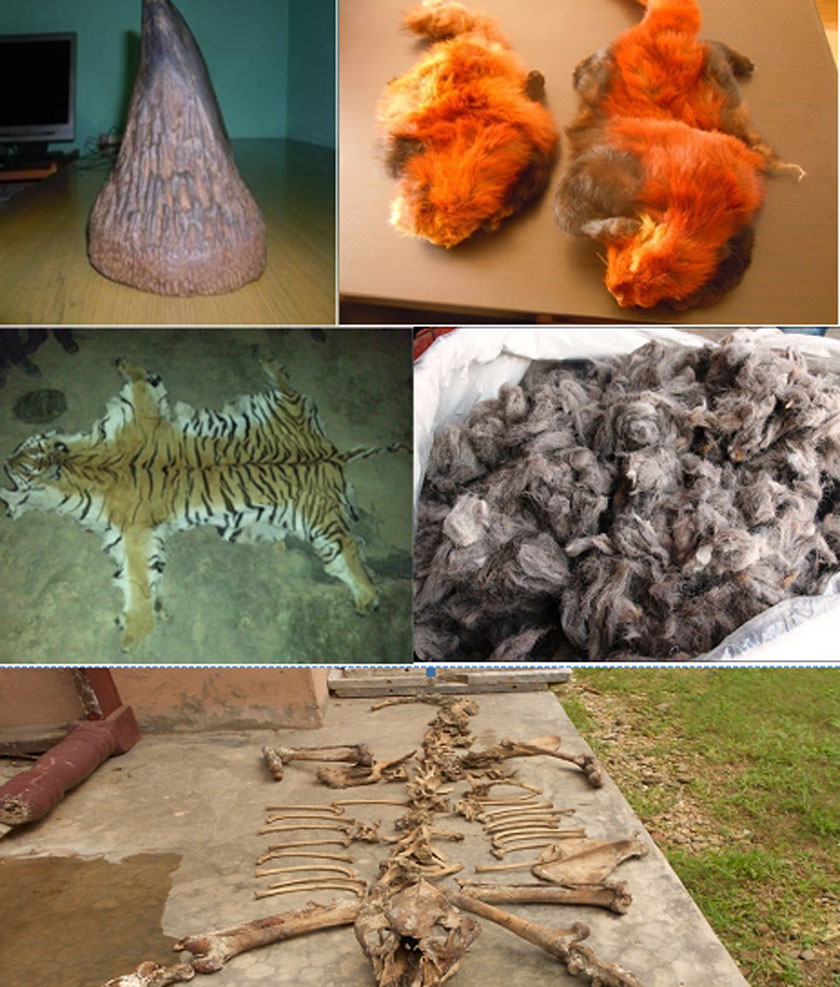Kathmandu, June 3, 2016:Â Statistics shows that Nepal Police has failed to bust network of wildlife poaching in the country despite many operations. The police accept that international poachers too have extended their network here.
Nepal Police’s Central Investigation Bureau (CIB) carried out 27 operations against poachers and arrested 63 people involved in this crime in financial year 2013/14.
Thirty seven operations and 85 arrests in the next fiscal and 24 operations along with 66 arrests this fiscal prove that poaching network has become wide in Nepal.
Challenges to wildlife poaching has grown with increase in game hunting, space encroachment, lack of food, conflict between man and animals and illegal business of ‘trophy hunting’.
Nepal Army has a strong presence in all wildlife protection areas. CIB has formed a separate unit ‘Pillar no. 4’ for investigation into crimes against wildlife and illegal poaching. Other bodies like National Parks and Wildlife Protection Department, District Forest Office, protection area offices also exist but poaching is on the rise due to lack of coordination among these offices.
Three hundred sixty-nine rhino horns, 69 tiger skins, 185 elephant tusks, 493 leopard skins and 36 musk-deer gland have been collected over the last 20 years. This statistics alone is enough to prove that wildlife poaching has become a menace.
International network
International poachers have made Nepal a ‘transit nation’ to smuggle wildlife products to countries like China, Vietnam, Japan and Cambodia where such products are in high demand. State mechanism to control this crime is in its nascent stage.
Many layers ranging from local to international network in wildlife poaching exist. International criminal groups inform locals about flora and fauna, hunt them, broker them and export them to different countries.
‘Zero poaching’
Nepal has led by example in rhino protection by maintaining ‘zero poaching year’ for three consecutive years from 2013 to 2015. As per the latest statistics, 534 one-horned rhinos roam in Nepali forests. Tiger population has increased over the years to reach 198. This growth in these two animals tells the story of Nepal’s success.
But seizing of trophy hunting on a daily basis has mocked all claims of zero poaching. Especially leopard, pangolin and red panda have become poachers’ targets these days.
Poacher Ramkumar PrajaÂ
Notorious poacher Ramkumar Praja was served Interpol’s red corner notice for killing 20 rhinos and arrested on 30 January 2015 in Malaysia. Nepal Police brought him to Nepal nine days after the arrest.
He was found involved in killing 20 rhinos and selling their horns, wounding five rhinos and selling two separate horns. The police have arrested 13 people in Rajkumar’s group.
Interpol had issued red corner notice on Nepal Police’s request to US citizen Ian Braker who was found poaching wildlife. He used to operate in Kathmandu and is still at large.
Gypsy hunters
On 21 May 2015, Ramdatta Banjaran alias Jasu was arrested in Bardiya with tiger skin. Other gypsies too were arrested earlier in different districts with wildlife products.
Gypsies, originally from European countries, entered India through Afghanistan some 23 years ago. These forest inhabitants hunt animals and trade in wildlife products.
This group of half-naked nomads is more powerful and daring than common people. They use natural weapons to hunt clawed animals. Male members kill animals while women and children are involved in business. Investigations have shown that they give a feast of goat meat immediately after killing a tiger and bury wildlife products under their oven. They hunt animals at the death of their relatives.
Controlling poachers
CIB Chief DIG Nawaraj Silwal says that all stakeholders need to work hand in hand for curbing poaching activities. It is essential that participation of local community, use of highest available technology and coordination among government bodies to protect wildlife.
Experts have concluded that Nepal needs to take diplomatic initiatives with ‘destination’ countries for wildlife products to curb this menace. Rules governing trophy hunting too should be amended for wildlife protection.








